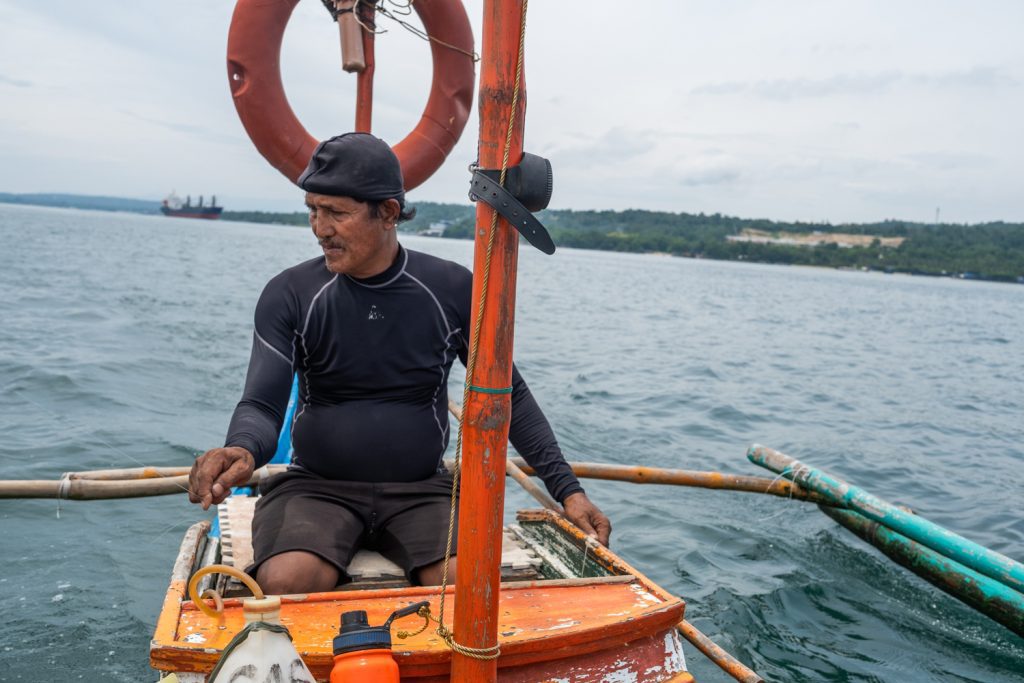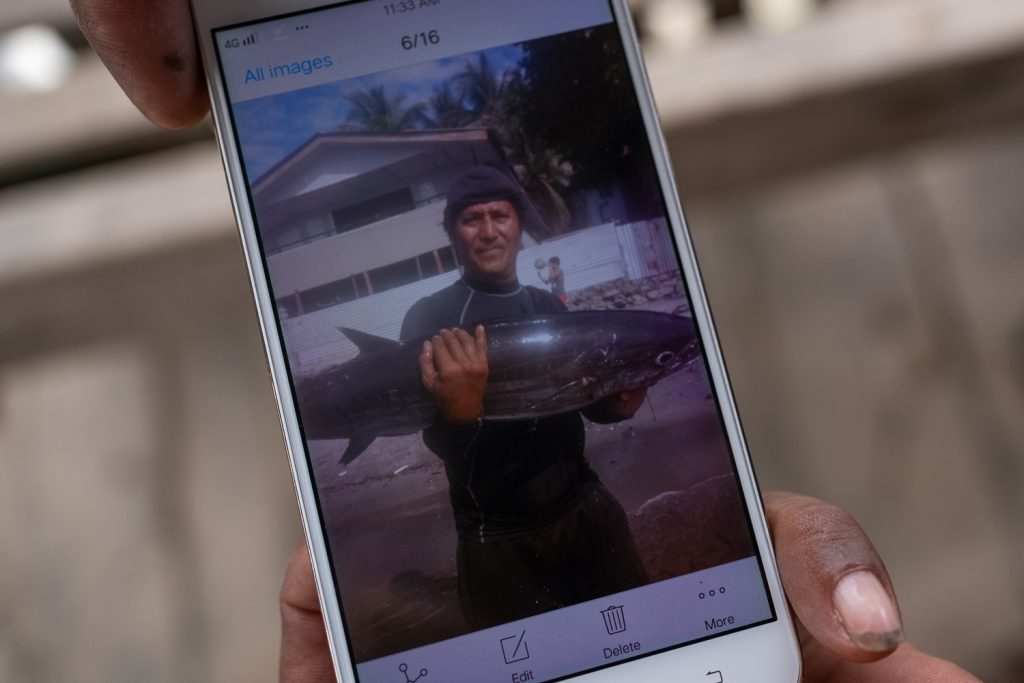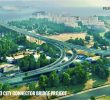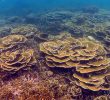By Geela Garcia
- Philippine locals lose hope as China-funded bridge set to destroy healthy reef
- A proposed China-funded bridge could wipe out the rich marine ecosystem of Paradise Reef, one of the few healthy reef areas in the Davao Gulf

MANILA, Philippines – The bridge is expected to boost economic development and trade between Samal Island and Davao, and generate employment for locals working on its construction.
With white sand beaches and pristine waters, Samal Island is among the most popular tourist destinations in Davao del Norte, south of the Philippines.
It is one of the few areas in Davao province where divers can access an abundance of hard and soft corals – barely 500 metres from the shore – at the aptly-named Paradise Reef.
Located in the Pakiputan Strait and stretching to the Davao Gulf, the reef is home to some 100 species of fish and century-old giant clams, according to locals.
But if a proposed China-funded bridge connecting Samal Island and Davao City went ahead, the rich marine ecosystem of Paradise Reef will be threatened, marine biologists say.
Paradise Reef must be protected at all costs because it is one of the few healthy reef areas in the Davao Gulf, said Cleto Nanola, a professor at the department of biological sciences and environmental studies at University of the Philippines Mindanao.
“There will be major species lost because of habitat degradation and siltation from the construction, and it will take so much time for the reef to recover, leading to biodiversity loss,” Nanola said.
The reef is one of the main attractions in the region, attracting around 200-250 tourists every day, according to the Rodriguez-Lucas family, a wealthy local family that owns the site and runs the Paradise Island Beach Resort that has housed the coral garden for over 35 years now.
What’s at stake
Samal Island is a protected area that was declared a Mangrove Swamp Forest Reserve by the central government in 1981. Hizon, the town in Davao where the other landing of the bridge will be built, is also a local protected area.
Currently, people commute between Davao and Samal Island by a passenger boat that takes less than 10 minutes.
The Samal Island-Davao City Connector, a project estimated to cost around US$400 million, is expected to make transport more convenient for 3,700 households.
The bridge aims to increase economic development and trade between Samal Island and Davao and generate employment for the locals who will be working for five years on its construction.
In January, a Writ of Possession of the site was granted to the Philippines Department of Public Works and Highways, despite disapproval by the Rodriguez-Lucas family.
Environmentalists in the region have also been critical of the project. Marine biologist Nanola said the most worrying impact was the siltation expected from the digging of boreholes.
Carmela Marie Santos, director of the environmental group Ecoteneo and convenor of Save Samal Reefs Alliance, said that her organisation expects tens of kilometres of siltation, a process by which water becomes dirty due to pollutants.
Santos said what had been done was unlawful because there was a current temporary restraining order case filed at the Supreme Court to prevent the construction of the bridge while the Rodriguez-Lucas family was still negotiating it.
The Rodriguez-Lucas family declined to be interviewed because the matter remains under consideration in the Philippine Supreme Court.
The construction, which began earlier this year, will drill 98 boreholes around 500 metres deep into the seabed, which will decapitate corals, cause siltation and sedimentation, noise and generate excessive dust.

Construction of the wharf is under way and the project is expected to employ over 300 Chinese workers and some locals.
There are other risks, too.
“When they were doing the soil sampling in December, helicopters were flying around the area with an estimated noise of 100dB. It affected marine wildlife from the shore and even marine mammals documented from Talicud island, an island 18km (11.2 miles) away from the site, because they travel 80-200km a day,” said Santos.
In June last year, a pod of dolphins was also photographed on Talicud island. Loud noises typically affect dolphins’ hunting capacity. A Facebook post by Davao resident Darrell Blatchley on August 2 showed a dead spinner dolphin with ruptured eardrums in Punta Dumalag Matina, just across Samal Island.
“In their [the project’s] Environmental Impact Statement (EIS) and Environmental Compliance Certificate issued in December 2020, there was no mention of the impact of marine mammals and mitigation measures. In the EIS, the study dismissed the impact as not significant because Talicud island is 18km away,” Santos said.
To manage siltation, the Department of National Resources recommended building silt curtains to prevent contamination of the greater Pakiputan Strait. However, biologists and environmentalists maintain that the building of the bridge will still cause irreversible damage to the sea.
There has been no official economic evaluation, but based on informal calculations, marine biologist John Lacson from the Paradise Island Beach Resort estimates reef damage at 360 million pesos (US$6.35 million).
“The estimate includes shoreline protection, tourism, fisheries productivity, and biodiversity. However, Paradise Reef is the only remaining healthy reef on Western Samal and is biologically priceless,” he said.
Santos said that Ecoteneo, locals and the Rodriquez-Lucas family are not against the bridge and development, but hope for a development that puts ecology and people first. The Rodriguez-Lucas family owns a nearby property and has offered it as an alternative landing site but petitions by Ecoteneo to relocate the bridge have gone unanswered.
Impact on communities
From Davao, the bridge runs through the small local village of Hizon, a designated marine protected area since 2013. Locals in Hizon have lost hope of protecting their coast, and fishermen have stopped fishing as they started incurring losses.
Leo Manila, 61, is one of the few fishermen left. But he only fishes to feed himself, and his current source of income comes from working as a guide for professionals who do jigging and fishing as a hobby.
“There are professionals who hire us with our boats to go fishing with them around the Davao Gulf, around 30-40 minutes away from our shore. They catch huge fishes and they pay us 500-1,500 pesos depending on their catch,” said Manila.

While locals of Hizon town, mostly fishermen and the urban poor, are worried about the environmental effects on the reef, they have more pressing concerns like day-to-day survival, said Gideon Cruz, chairman of Hizon’s Fisheries Aquatic Resources Management Council.
Cruz said that his group’s motto is “we can only save what we can”, as they felt powerless against the forces of development and tourism.
“They said the construction will generate jobs for us for the next five years, and that will help us with our expenses. Right now, we earn when the Chinese workers of the bridge rent our boats,” said Manila.
However, after consulting the Davao City Council in May, Santos said the contractors are not required to employ Filipino workers, suggesting that Chinese workers would be prioritised.
The chairman of the management council emphasised that the group understood the importance of the reef and the shore, but people in his community require sustained livelihood help before they can even participate in issues concerning reef protection.
“I used to not believe in climate change, but we can notice the difference in the temperature of our waters compared to the past. We try our best to take care of the sea, but there are always bigger forces than us, making it hard for us to save what we can.”
This story was produced with support from Internews’ Earth Journalism Network and was first published on the South China Morning Post.
davao, davao gulf, paradise reef, philippines, samal








